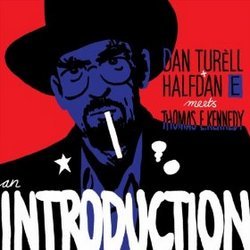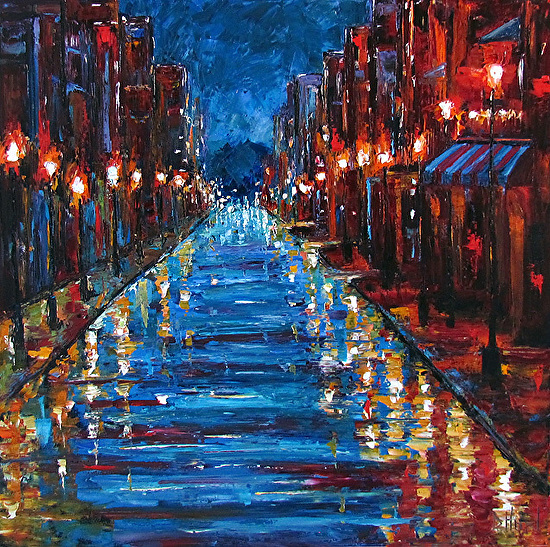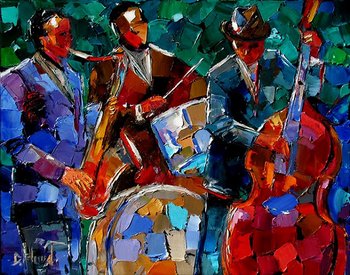|
KYSO Flash ™
Knock-Your-Socks-Off Art and Literature
|
|
|||
Reading to the Beatby Jack Cooperan INTRODUCTION: Dan Turèll + Halfdan E meets Thomas E. Kennedy 1 
Before I die I want to stroll through the city one last time let this be my last humble wish to walk on my feet through my city through the city of Copenhagen as I’ve done so many times before and I’ll know this is the last time and I’ll chose my route with care and I’ll walk down Isted Street or West Bridge Street and walk down all the narrow sunless side streets with all their shutdown shops and I’ll look at all the junk-shop displays of yellowed curtains and greasy gas rings and I’ll rummage in the book boxes and I’ll buy nothing and not because it’s the last time but because I never rummage in the book boxes to buy anything but to rummage in them and think how short and strange life is...2
I’ll admit, when I hear poetry as breezy as this, I tend to dismiss it. This tendency is compounded when the words are accompanied by equally breezy music founded in the jazz standard, the snap-your-fingers, nod-your-head jazz of the ’50s and ’60s, albeit updated with electronics and background vocals. To my mind, true poetry should pack a wallop in the fewest words possible, like Eliot’s “April is the cruellest month”3 (the cycle of life in five words), or Neruda’s “Love is so short, forgetting is so long”4 (the embodiment of romantic love). There are few lines like this here, but instead, streams of words flowing in improvisational-sounding free verse connected by an endless series of “ands,” buttressed by saxophone, harmonica, a choir, and polyphonic synth. Yet, the overall effect of the Turèll/Halfdan/Kennedy collaboration is satisfying in its own retro way. As you listen to the CD, it’s easy to imagine sitting in some coffeehouse or nightclub in Tokyo, Copenhagen, New Orleans, or San Francisco and grooving to the laid-back bustle of a jazz combo behind a cool-looking dude bending the mic with street poetry.
Although originally written in Danish and produced as an album in the early 1990s, the words recall a simpler life of the ’50s, when records were played on phonographs, neighbors stopped by to chat, and letters had to be written5—a sort of pre-Internet, pre-hip-hop bliss. When Turèll died six months after the album’s release, the material languished for 16 years until Kennedy, an American living in Copenhagen, contacted Halfdan E, offering to translate the lyrics and read them to the music. The result is poetry in the beat tradition set to jazzy, syncopated rhythms reminiscent of a kinder, gentler Kerouac, Ginsberg, and Ferlinghetti. In A Coney Island of the Mind, Ferlinghetti includes seven works that were, he tells us, conceived specifically for jazz accompaniment and as such should be considered as spontaneously spoken ‘oral messages’ rather than as poems written for the printed page [48]. That reference to “oral messages,” I believe, provides the basis for appreciating the genre. The lyrics are not intended to be pored over word by word. Instead, the audience is supposed to “savor a bitter,”6 lean back, and listen. For the record, I didn’t find many messages. Most of the cuts are stream-of-consciousness storytelling, a bit like rap without the incessant rhyme and post-civilization gangster overtones. At first, the music didn’t seem to rise above a background element, the kind of sounds you might put on when painting a room in beige or hear in an old episode of Man from Uncle. But the surprisingly broad range of instrumentation and the clean, professional arrangements grew on me. My favorite cut is “Total Euphoria,” with its swirling electronic orchestra, scat singing, and surreal lyrics that fill a catchy narrative driven by repeating lines: ...and I look out at the moon There are other cuts with enticing elements, even though most are lacking in any sense of urgency or intensity, let alone resolution. I liked “Deep Frost Film” for its tender, yet unemotional, take on what seems to be a couple at the moment of break-up: ...and I look over at you In “Red Harvest,” noir-film sound effects and a nice sax lick set the scene for a ’50s-era Mickey Spillane character, who jumps into alleys with his “rod” and shoots someone’s cheating husband, then becomes the target himself, but we never know why. And why should we? This is oral messaging and the message is this: We’re all targets, or maybe it’s, Don’t ask why about anything. A while back, I attended a reading that featured a jazz ensemble playing extemporaneous riffs to back up the poets. When it was my turn, a fellow poet, sensing my inexperience at this kind of performance art, said, “Read to the beat.” That little piece of advice saved me from meltdown. I let the musicians establish a pulse, then adapted my lines to their rhythms and cadences and survived with compliments.
In much the same way, you may resist the breezy familiarity of an INTRODUCTION, as I did in the beginning, thinking that true poetry has its own music and doesn’t need a back-up. Or, you may conclude, as I do, that the infectious rhythms and cadences of this time-tested genre survive quite well here, with compliments. Footnotes:
Jack Cooper’sIssue 4, Fall 2015
first formal collection of poetry, Across My Silence, was published by World Audience, Inc. (New York, NY, 2007). His work has been nominated three times for a Pushcart Prize and chosen as a finalist in North American Review’s 2011 James Hearst Poetry Prize and in the 2014 Eco Arts Award in Creative Excellence. His micro-fiction, “Options,” won first place in the Flash Fiction Chronicles String-of-10-SEVEN Contest in 2015. Cooper’s poetry and/or flash fiction and mini-plays have appeared in Slant, Bryant Literary Review, Connecticut River Review, The South Dakota Review, The Evansville Review, North American Review, The MacGuffin, and many other publications. His play That Perfect Moment, co-written with Charles Bartlett, was a headliner at the NOHO Arts Center in North Hollywood, California, and The Little Victory in the 2009-10 seasons. More on the Web: By, About, and Beyond⚡ A Man with a Beautiful Mind: Jack Cooper, an interview by Sonya Sabanac for Poet’s Quarterly (1 October 2012); includes the concrete poem, “Shrew” Debra HurdIssue 4, Fall 2015
Based in Austin, Texas, painter and pianist Debra Hurd is known for her vibrant paintings of city scenes and jazz, rock, and blues musicians, as well as her live performances of boogie-woogie, honky-tonk music. Learn more about the artist and view her galleries at: debrahurdart.com More on the Web: By, About, and Beyond⚡ Storm at Dusk, a city-scape oil painting at the artist’s blog (31 January 2009) ⚡ Bob Marley’s Hair, a portrait of the reggae singer (6 September 2011) ⚡ Angry Forest, abstract acrylic (21 March 2014) ⚡ Stone Cottage (23 May 2012) ⚡ Mosaic Jazz #4 (16 March 2014) |
|
Site contains text, proprietary computer code, |
|
| ⚡ Many thanks for taking time to report broken links to: KYSOWebmaster [at] gmail [dot] com ⚡ | |


